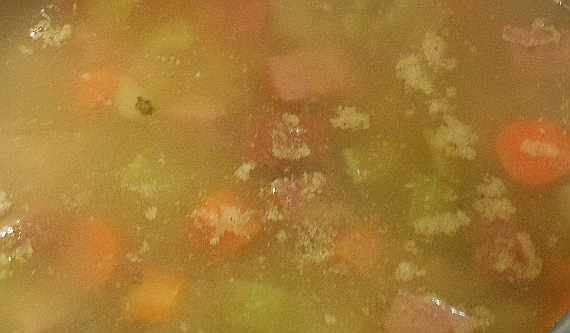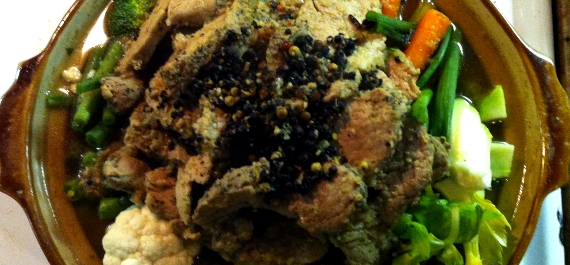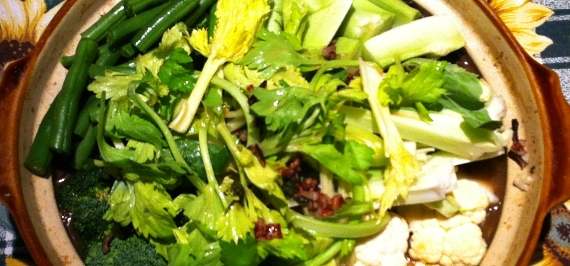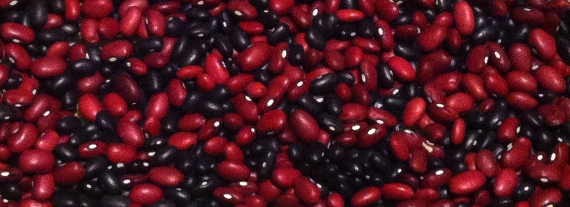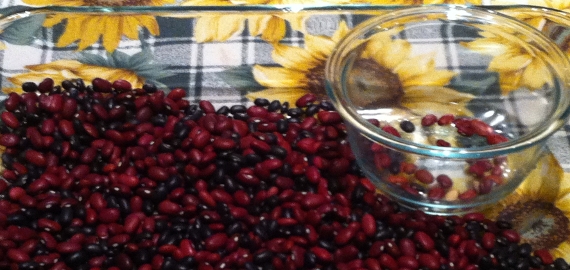
I love lentils! I especially like eating Indian and Himalayan spiced dhal (daal or dal), usually made into a very comforting thick lentil pottage or soup. Not all dal varieties are the same; many differ in size, shape, flavor and nutrition. Some types of dal are not even lentils but different kinds of legumes, like peas, chickpeas or beans. They contain less insoluble fiber than beans and are not as irritating to finicky digestive systems, which means they cause very little gas, if any, depending how much you eat; keep in mind I am not suggesting you eat dhal three times a day, even though they taste really good.
These lentils aren’t restricted to soup. You can dish them over other vegetables, quinoa, rice, buckwheat or green salad. Commonly daal is non-vegan and includes ghee, or clarified butter, but it is delicious either way. Another way to westernize this dish is to treat it like split pea or lentil soup by adding meat, like ham or sausage, but i prefer mine vegan. Sometimes if I haven’t eaten daal in a while, I crave it.
Chana dal are baby chickpeas or skinned and split black chickpeas (or kala chana if still in their skins), so don’t confuse them for yellow split peas even though they are the same exact color but flatter. They are low on the glycemic index, which means they are good for diabetics and are low in bad carbohydrates, have lots of fiber and protein and a significant amount of zinc, folate and calcium. Here is the listing for Bob’s Red Mill chana dal. Chickpea flour or besan is often made from this variety. These chickpeas require soaking in water at room temperature for two to three hours. If you add in half a teaspoon of baking soda, the chickpeas soften much quicker and then only need to cook 10 to 15 minutes, depending on your desired texture. Adding baking soda makes the water more alkaline, allowing beans to cook to doneness in only half the time; you can add the soda to any harder beans that require cooking for longer periods of time.
Masoor dal are red lentils, which contain significant amounts of fiber, flavonoids, complex carbohydrates, iron, folate, magnesium, phosphorous and vitamin E. Click here for more nutritional benefits. Red lentils do not require soaking; just cook it for about 25 to 30 minutes. Here is Ashley Skabar’s spicy daal recipe made with red lentils that looks great.

Toor dal or arhar dal are yellow pigeon peas and the same color as chana dal and yellow split peas, however they are not low in glycemic value but contain healthy complex carbs. They are high in protein, vitamin A and C, folate and fiber. Toor dal need to soak for 30 minutes and then cooked for 50 minutes. Check out Jacqueline Pham’s recipe on her blog and Karen Mintzias’ recipe over at Big Oven.
There are three types of urad dal, which is black beluga lentils. You can get them whole, like I did, split or split and soaked, which removes their skins. They are rich in protein, fiber, calcium, iron, folate, magnesium and zinc. Beluga lentils also do not require soaking, only cook them at a low boil for 30 minutes. Check out this recipe over at Indian Food Forever.
French green lentils or lentilles du Puy are olive green lentils with black speckles. They are a longer cooking lentil, needing about two to four hours of soaking and 45 minutes of low boiling, due to all of the insoluble fiber they contain. Check out this recipe by Caroline Russock for some more inspiration. Green lentils a nutritious amount of complex carbs, protein and are fat free; they contain good amounts of your daily calcium and iron.
As per usual, most of the herbs and spices that I used to make this dish are from Savory Spice Shop in Santa Rosa. A while back, I decided to flesh-out my spice cabinet, throwing away stale seasonings and combining duplicates to make more room. I wanted to expand my flavor palate and try something new, exciting and exotic. I was feeling incredibly adventurous and did quite a bit of research first, focusing on recipes from cuisines that knew I adored but had never cooked with at home, which was extremely helpful when I went to explore the shelves in the shop. I must have examined at all of the jars and canisters they had for absolutely hours. I had a great time asking questions, smelling, tasting and making new discoveries. I ran back and forth from the shelves to the counter several times. The garlic and onion came from the farmers market in Cotati, and I bought the mugwort (an uncommon culinary herb used in medicinal teas) at Rosemary’s Garden.
Indian Inspired Dhal
Ingredients
1 C Petite or Regular French Green Lentils*
1 C Urad Dhal
1/2 tsp Fenugreek Seeds
1/2 – 1 tsp Cumin Seeds
1/4 tsp Ajowan Seeds
2 – 3 tsp Olive Oil**
3 – 4 Large Garlic Cloves, grated or minced
1 – 2 Medium Sweet Yellow Onion, peeled, trimmed, minced
1 Inch Fresh Ginger, grated or minced, optional
4 C Filtered Water
2 Bay Laurel Leaves
1 T Cilantro Leaves
1 T Mugwort Leaves
OR 1 T Parsley Leaves
Mixed Peppercorns, ground to taste
1 tsp Sea Salt, to taste
*If you really want to stay with an Indian theme and add more color contrast, substitute the green lentils with channa dhal, toor dhal or masoor dhal. These lentils all have various cooking times, so adjust your preparation accordingly.
**If you want to make dhal without oil, skip the step of sauteing, and add the garlic, onion and ginger in with the other spices near the end of cooking the lentils.
Directions
Always sort your legumes and discard any broken or discolored ones along with any rocks you may find. Rinse your dal under cool water until the strained off water becomes clear to remove any dust or dirt. Put the lentils into a large mixing bowl or other vessel. Pour in enough water so that the level reaches about an two to three above the lentils. Remove the ones that float to the top. Soak the green lentils for two to four hours.
Dry roast the spice seeds in a small pan to intensify their flavor and get rid of any bitterness. Grind the seeds as small as possible in a spice grinder.
Saute the garlic, onion and ginger in a large oiled soup pot until the onion turns translucent, stirring often.
Rinse the lentils. Add them with the water to the pot, and bring it to a boil. Reduce the heat to medium to prevent the water from boiling over. Cook the French lentils for 15 minutes, stirring occasionally. Stir in the black lentils. Continue to cook the lentils for 25 minutes, occasionally adding more water if needed and stirring. During the last five minutes add the powdered spices. Stir the mixture and cook five more minutes. Remove the pot from the heat completely, and stir in the herbs. After 15 minutes of cooling,taste test the lentils and adjust the flavors as needed. Serve the lentils on a salad, on toast, over or mixed into rice or noodles or as soup or really anywhere you would use beans. I mixed mine in with marinated vegetable noodles.

